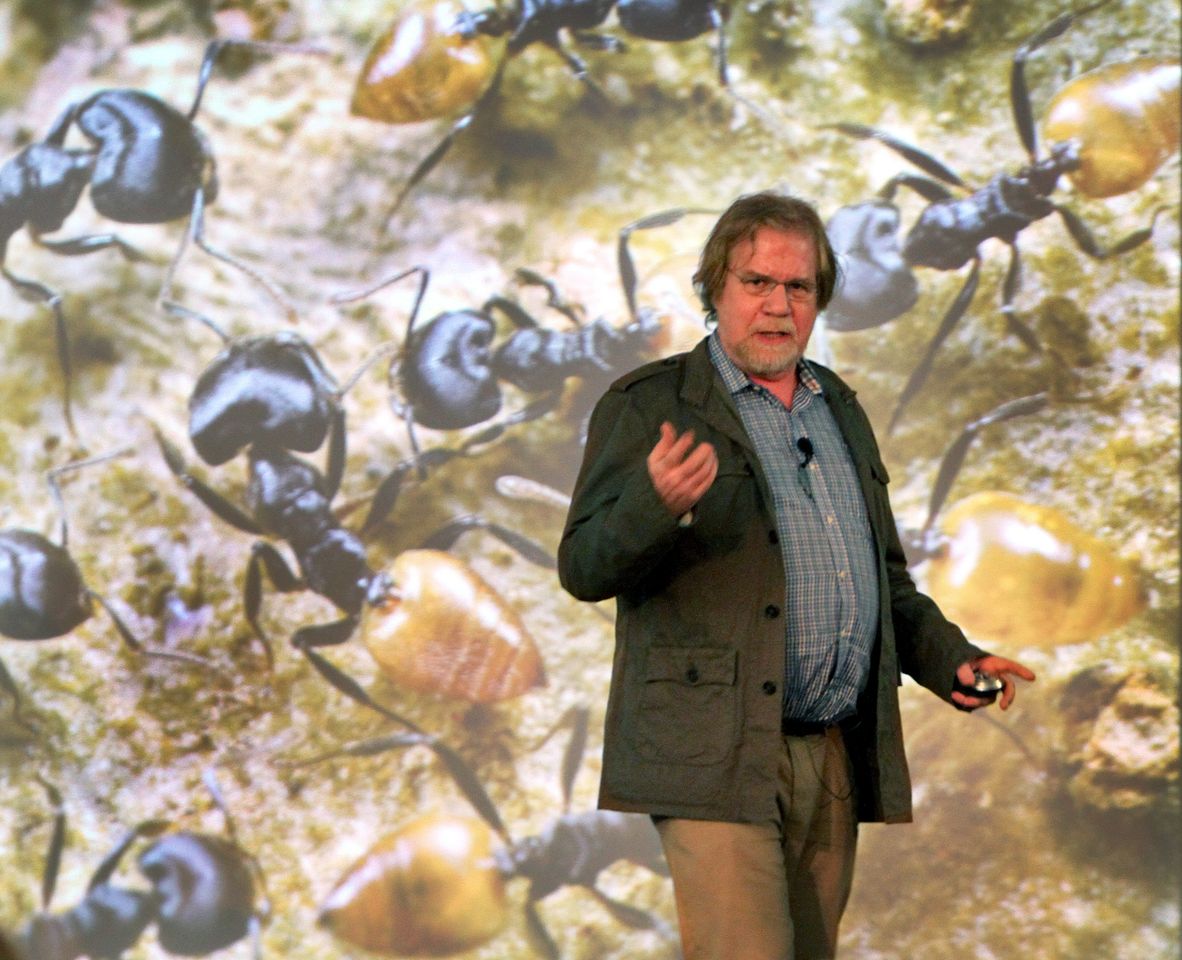Moffett Gives Lecture Audience Up-Close Look at Ants
March 21, 2014
In Mark Moffett's travels around the world as a nature photographer, biologist and explorer, he has found ant families with only four members, and also ant colonies consisting of 40 million. Watch the little creatures closely, he says, and ant societies can help us better understand human societies.
Moffett was at Old Dominion University Thursday evening to present "Adventures Among Ants" as the Lytton J. Musselman Natural History Lecture, which is an annual event in the President's Lecture Series.
His engaging lecture to nearly 400 people in Webb University Center was illustrated with his award-winning photographs of ants he has studied in dozens of countries. As he has done during frequent guest appearances on "The Colbert Report" and "Late Night with Conan O'Brien," Moffett alternated seamlessly between humor and serious entomological and sociological commentary.
At Harvard University, Moffett was the student of E.O. Wilson, the biologist and theorist widely considered to be the world's foremost authority on ants. Wilson set forth evidence that the evolution and natural habits of ants could tell us something about humans, but because his ideas were controversial he was shy about promoting them, Moffett told his ODU audience.
"But I see the societal parallels, ants with humans, and I think the comparisons are cool," he said. "These are parallels that emerge because of social complexities."
A primary thread of his talk juxtaposed "small town" ants with those in the "big city."
"Tempo," for example, varies greatly between ant societies that have just a few members and those with thousands or millions of members. While a mud ant in a dozen-member colony in Ecuador might move at "glacial speed," Moffett explained, the "big city" ants that show up at picnics in the United States can be relatively swift. "As you move from small towns to bigger and bigger cities, things accelerate. In a small town there is no reason to rush. In Times Square in New York, on the other hand, there is so much to see and do. There's a lot to be gained with type-A behavior."
Moffett identified "communications" as also being influenced by the size of communities among ants and humans. "There is not much communication in a small town. As societies get bigger, more communications are going on." A large number of ants following a chemical trail, he said, can quickly pass messages about where the food is or where danger lies. "They don't have leaders. They don't need leaders. The swarm swerves to go the right way."
A third theme he identified was "specialization." "You have generalists in a small town. In a hunter-gatherer group, you can't afford to be specialized," he pointed out. The same is true for small groupings, in which some ants have evolved to have a "tool chest" growing from their heads that allows them to accomplish a large number of jobs, such as digging and cutting. On the other hand, large colonies have ants that have evolved to do very specific jobs.
The photos Moffett displayed were exceptionally detailed close-ups of ants, including a rare one of a "gliding" ant that can move from limb to limb in the tall trees of a rain forest. But most were of ants on the ground where he said he doesn't mind getting muddy as he "gets down to the level of my subjects."
National Geographic magazine, to which Moffett has contributed photos and articles, has called him "the Indiana Jones of entomology." He is a research associate at the Smithsonian Institution who previously worked for Harvard's Museum of Comparative Zoology and for the University of California Berkeley's Museum of Vertebrate Zoology.
Moffett has received the Explorers Club's Lowell Thomas Award, the Distinguished Explorer Award from the Roy Chapman Andrews Society, Yale University's Poynter Fellowship for Journalism and Harvard's Bowdoin Prize for writing. Five of his images appear in the special National Geographic publication, "100 Best Wildlife Pictures." He is the author of "Adventures Among Ants: A Global Safari with a Cast of Trillions" and "The High Frontier: Exploring the Tropical Rainforest Canopy."
This was the 11th annual lecture in the Musselman Natural History series, which is supported by an endowment. Lytton J. Musselman is the Mary Payne Hogan Professor of Botany at ODU.
The effort to launch the lecture series was led by Michael Pitchford, an ODU alumnus and former biology student of Musselman who is now president and chief executive officer of Community Preservation and Development Corp. in Washington, D.C. Pitchford introduced Moffett on Thursday evening.


